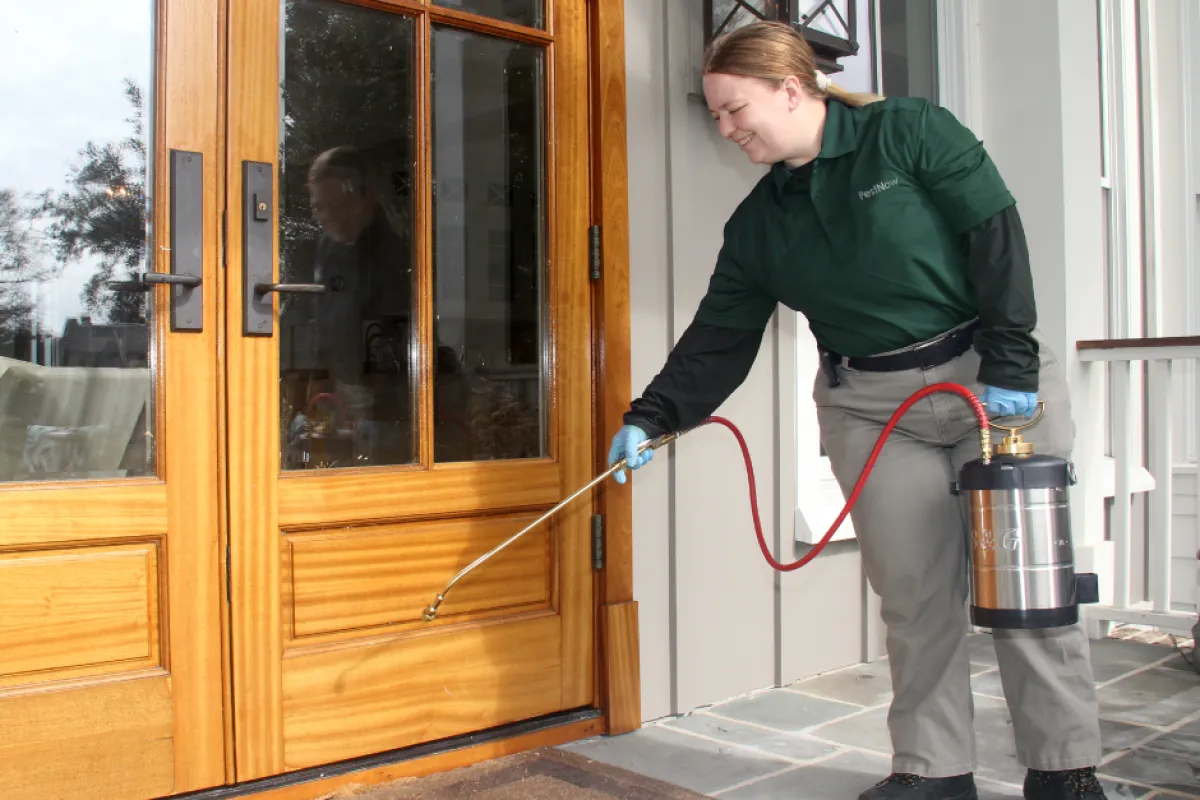A1 Bed Bug Exterminator Charlotte - Effective and Budget Friendly Services
A1 Bed Bug Exterminator Charlotte - Effective and Budget Friendly Services
Blog Article
Bed Insect Treatment Break Down: Contrasting Chemical Vs. Non-Chemical Solutions
In the realm of insect control, specifically when dealing with the relentless concern of bed insects, the selection between chemical and non-chemical therapy services can be a critical one. Both methods provide distinctive advantages and drawbacks, influencing aspects such as effectiveness, security considerations, and total cost. By analyzing the nuanced details of each technique, a more clear understanding of which path to go after in dealing with a bed insect infestation can be acquired.
Effectiveness of Chemical Therapies
Chemical treatments for bed insect problems have actually been extensively identified for their fast and powerful efficacy in eradicating these parasites. When taking into consideration the efficiency of chemical therapies, it is vital to recognize that they can supply a complete and quick option to a bed insect trouble.
Additionally, chemical treatments have the benefit of using residual results, indicating that they can continue to remove bed bugs even after the preliminary application. This recurring action is particularly advantageous in combating any kind of potential re-infestations. In addition, the rapid action of chemical treatments can bring relief to people dealing with extreme bed bug problems, allowing them to gain back control of their living areas quickly.
Security Interest In Chemical Solutions
One critical aspect that needs mindful factor to consider when using chemical services for bed insect treatment is making sure the security of passengers and the atmosphere. Direct exposure to specific chemicals used in bed insect therapies can lead to respiratory issues, skin irritability, or other unfavorable reactions, particularly in people with pre-existing problems or sensitivities.
In addition, the environmental influence of chemical solutions is an additional substantial factor to consider. Some pesticides used in bed bug therapies might be damaging to beneficial pests, wild animals, and ecological communities if they seep right into the soil or water systems. It is necessary to utilize chemical treatments sensibly, complying with security guidelines, and thinking about less hazardous choices to mitigate these threats and guarantee the risk-free and effective monitoring of bed pest invasions.
Benefits of Non-Chemical Strategies
Taking into consideration the potential safety worries and environmental influence associated with chemical options for bed bug therapy, discovering non-chemical methods provides a promising alternative with numerous distinctive benefits. Non-chemical treatments are environmentally pleasant, as they do not add to air or water contamination, making them a lasting choice for parasite control.
Additionally, non-chemical services can be efficient in targeting bed pests, consisting of hard-to-reach areas where chemical therapies might not permeate - A1 charlotte bed bug exterminator. Approaches such as warmth therapy, vacuuming, steam cleansing, and bed mattress coverings offer thorough eradication without the use of hazardous chemicals.
Limitations of Non-Chemical Treatments

Furthermore, non-chemical therapies usually need multiple applications to accomplish successful eradication. This can be taxing and website link may not always ensure complete elimination of all bed pests and their eggs, especially in hard-to-reach or hidden locations.
Moreover, the success of non-chemical therapies greatly depends on correct implementation and thoroughness, which can be challenging for people without expert knowledge. Poor application of non-chemical methods may cause incomplete obliteration, leading to consistent invasions and the demand for additional therapies.
Consequently, while non-chemical treatments have their advantages, it is necessary to acknowledge these constraints and consider them when determining the most effective method for handling bed pest problems.
Price Contrast: Chemical Vs. Non-Chemical Options
Offered the restrictions connected with non-chemical therapies, an important aspect to assess in the context of bed insect monitoring is the price contrast in between chemical and non-chemical options. Chemical treatments normally involve the application of insecticides by professionals, which can vary from $250 to $900 per room, depending upon the seriousness of the infestation and the size of the location to be treated. On the other hand, non-chemical therapies like warm therapy or vapor can be a lot more expensive, with prices varying from $1,000 to $6,000 for a whole home. While the preliminary cost of chemical treatments might appear lower, several treatments might be called for to completely remove the invasion, potentially enhancing the overall price. On the other hand, non-chemical choices check my blog might offer a more sustainable and environment-friendly service, although they can be cost-prohibitive for some people. Eventually, when thinking about the cost of bed bug treatment alternatives, it is very important to weigh the ahead of time costs against the performance and long-lasting sustainability of the chosen technique.
Conclusion

Thinking about the possible safety worries and ecological influence associated with chemical options for bed pest treatment, exploring non-chemical techniques presents an appealing choice with several distinct advantages.Offered the limitations connected with non-chemical therapies, an important aspect to review in the context of bed pest management is the expense contrast in between chemical and non-chemical alternatives. In contrast, non-chemical treatments like warm therapy or vapor can be a lot more expensive, with expenses ranging from $1,000 to $6,000 for a whole home. While the first price of chemical treatments might appear reduced, multiple treatments may be required to totally get rid of the infestation, potentially increasing the overall price.In verdict, when contrasting chemical and non-chemical bed pest treatment options, it is crucial to consider effectiveness, security, benefits, constraints, and price.
Report this page